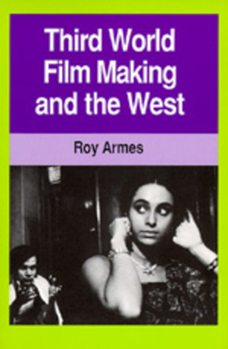Third World Film Making and the West
Select Format
Select Condition 
Book Overview
This volume is the first fully comprehensive account of film production in the Third World. Although they are usually ignored or marginalized in histories of world cinema," Third World countries now... This description may be from another edition of this product.
Format:Paperback
Language:English
ISBN:0520056906
ISBN13:9780520056909
Release Date:July 1987
Publisher:University of California Press
Length:381 Pages
Weight:1.35 lbs.
Dimensions:1.0" x 6.0" x 9.0"
Customer Reviews
1 rating
Dated and slanted, but the best yet available
Published by Thriftbooks.com User , 18 years ago
Roy Armes is a well-known name in film studies, and this book fills a much-needed void. Though "Third World Film Making and the West" was published in 1987, and is thus almost two decades old at this point, it is still the best available introduction to Third World (hereafter TW) cinema--with the caveat that the text spends as much if not more time passing judgment on the socio-economics and politics of filmmaking as it does charting the history of TW cinematic production per se. And since Armes' perspective is thoroughly Marxist, expect the de rigueur bashing of First World nations, along with the ideology and jargon characteristic of such a view. The text is divided into four parts: the first situates Third World (hereafter TW) social and economic challenges against the horizon of colonialism, post-colonialism and capitalism, with some Third World art and film history thrown in for good measure--mostly towards the end of Part One; Part Two, entitled "The Theory and Practice of TW Filmmaking" finally begins to broach sustantial discussions of individual films and filmmakers; Part Three addresses TW filmmaking geographically, moving from India and Asia to Latin America, the Middle East and Africa; and the last part, "Cinema Astride Two Cultures," addresses six of the more important individual filmmakers (like Satyajit Ray, Yousseff Chahine, etc.) roughly representative of the geographical divisions articulated in Part Three. The book provides a wealth of fascinating information, some well-known to film scholars and some not so--in fact, though the bibliography is impressive, I expected and would have appreciated much more robust and frequent references and citations for the plethora of details Armes provides. In short, if you can handle the tone and navigate your way through the ideological landscape, this is the most knowledgable and comprehensive introduction to Third World filmmaking yet available.





